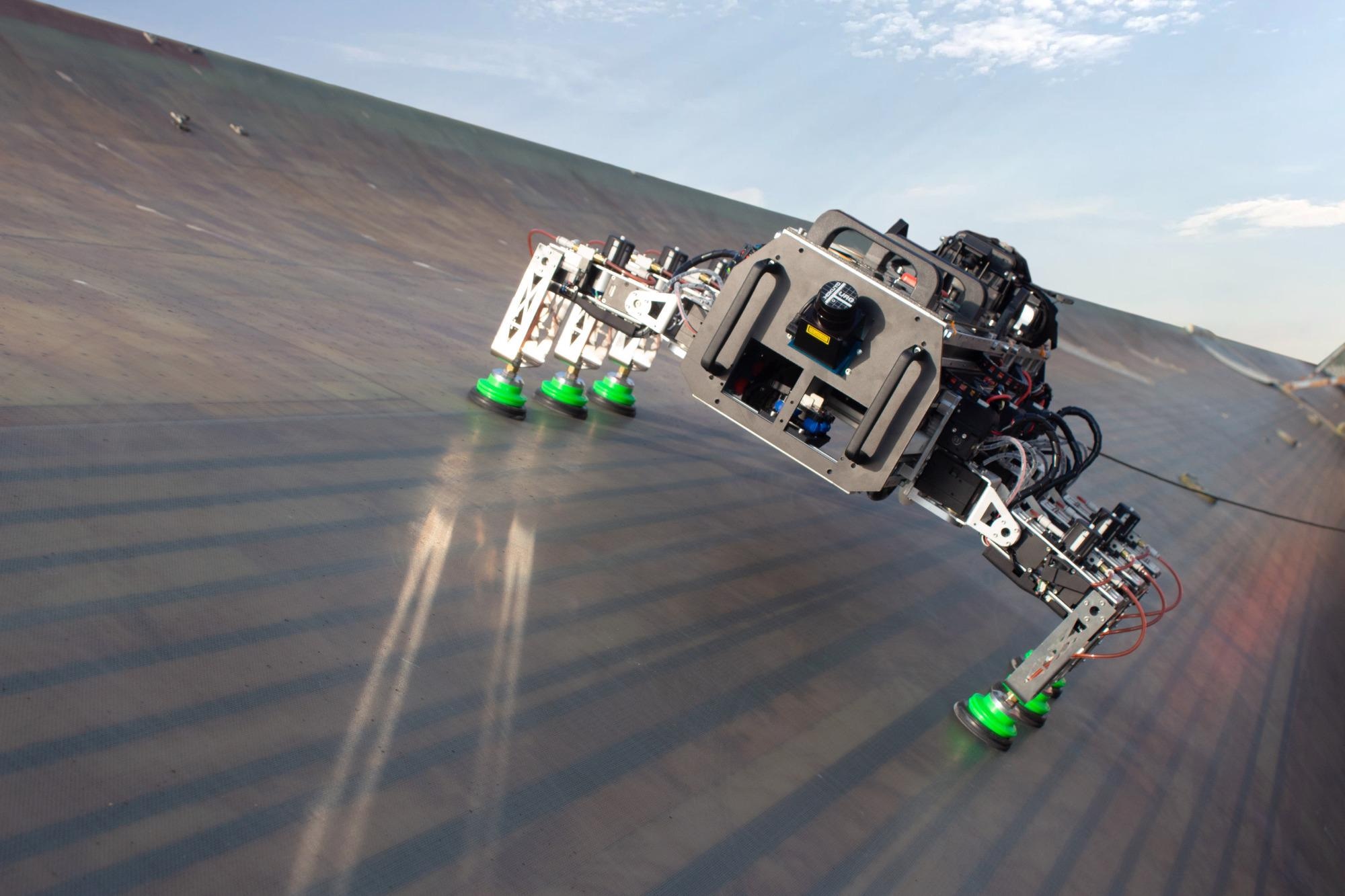The new year has seen the start of two major research and development (R&D) infrastructure projects in Blyth, Northumberland that will support the future advancement of offshore wind turbine technology and operations.
 Robotics technology such as BladeBUG’s maintenance and repair robot have previously been tested at ORE Catapult’s National Renewable Energy Centre. Image Credit: Offshore Renewable Energy Catapult
Robotics technology such as BladeBUG’s maintenance and repair robot have previously been tested at ORE Catapult’s National Renewable Energy Centre. Image Credit: Offshore Renewable Energy Catapult
The Offshore Renewable Energy (ORE) Catapult has simultaneously broken ground at its National Renewable Energy Centre in Blyth on a multimillion-pound offshore wind robotics centre and a state-of-the-art additive manufacturing cell that will be used to research next-generation wind turbine blades.
The £3 m offshore wind robotics centre, funded by UK Government’s Getting Building Fund with the civil work being undertaken by Durham-based Halls Construction, is set to be the first of its kind in the UK dedicated to offshore wind, enabling robotic technology developers to access representative, onshore and offshore test and demonstration environments. It will also form key R&D infrastructure behind the drive to increase robotic intervention in the safety, cost reduction and efficiency of offshore wind farm operations, a market potentially worth £1.3 bn by 2030.
The North East Local Enterprise Partnership is managing £47 m awarded through the Getting Building Fund to support capital investment across the North East. The Fund was established early in the coronavirus pandemic to kick-start the economy, create jobs and help areas facing the biggest economic challenges as a result of the coronavirus pandemic.
The additive manufacturing cell will consist of a 3D printer and 6-axis robot with a 165Kg payload. The new capability will support ORE Catapult research into new offshore wind turbine blade technology, materials and manufacturing techniques, including rapid production of prototype blade enhancements such as vortex generators and edge erosion protection systems. The new capability will build on the Catapult’s collaborative work with industry and academia to boost the UK’s position in next generation turbine blade research and development.
ORE Catapult’s Test Facilities Director, Tony Quinn, said: “These investments underline the Catapult’s commitment to supporting the UK’s rapidly growing offshore wind sector from Blyth, remaining at the forefront of technology development and research. This is crucial as projects to deploy the largest offshore wind turbines in the world gather pace, and so accelerating UK-led technology and research to market becomes a priority – and that’s a role Catapult will continue to play with its latest research and development assets.”
Andrew Moffat CBE, Chair of the North East LEP Investment Board, added: “Continuing our investment in key strategic sites like the Offshore Renewable Energy (ORE) Catapult will help attract significant private sector investment in the North East as organisations look to develop new innovative technologies that help advance the offshore wind sector.
“The construction of the new offshore wind robotics centre at ORE Catapult will add to the world-leading infrastructure in our region and encourage more businesses to invest and locate in the North East.
“The Getting Building Fund has had a significant impact in the North East LEP area, ensuring regionally and nationally significant projects can be delivered; providing a boost to the region’s economy and creating more and better jobs.”